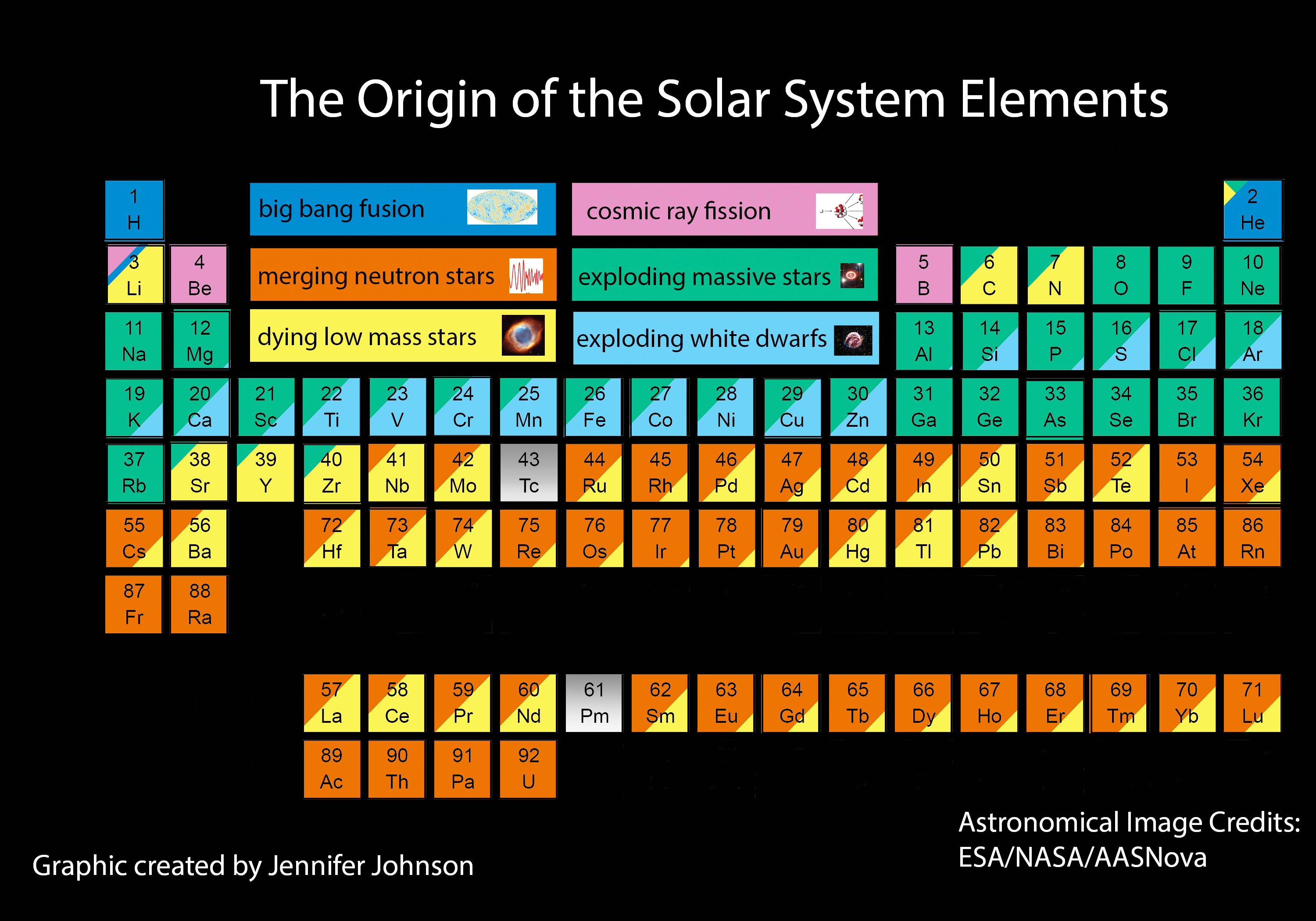Stars are basically different types of "furnaces" or matter factories operating at different temperatures and two types of matter works differently at different temperatures so they can fuse or change, other factors are gravity and pressure.
Implosion/explosions are extreme events that create other things, i know from earlier that gold isn't produced normally within a star, it is only created when it goes boom. There should be a large variety of the matter being produced in these factories since we have a bunch of star types (O,B,A,F,G,K,M... etc).
Interesting chart, i wonder how they came up with that (Spectrography?)
Btw: here is a better link:
http://blog.sdss.org/wp-content/uploads/2017/01/periodic_table.png